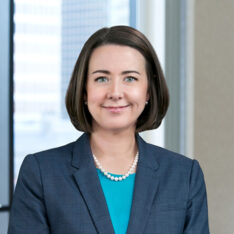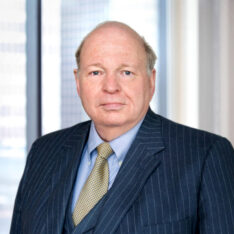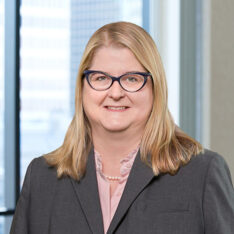The original Setting Every Community Up for Retirement Enhancement Act (SECURE Act), enacted in 2019, was a significant law related to retirement savings. In the spring of 2022, with an eye toward building on the reforms in that law, the U.S. House of Representatives passed the Securing a Strong Retirement Act. Despite strong bipartisan support, the bill stalled. Then, the U.S. Senate introduced its own retirement legislation, dubbed the Enhancing American Retirement Now Act.
SECURE 2.0 incorporates provisions from both bills and includes sweeping changes for qualified plans and IRAs — some already in effect — including these aspects with significant estate planning implications.
RMDs
The first SECURE Act generally raised the age at which you must begin to take required minimum distributions (RMDs) — and pay taxes on them — from traditional IRAs and other qualified plans, from 70½ to 72. SECURE 2.0 increases the age to 73, starting January 1, 2023, which applies to those born in 1951 or later. And beginning January 1, 2033, the age increases to 75, which applies to those born in 1959 or later. This change allows people to delay taking RMDs and paying tax on them.
The penalty for failing to take timely RMDs was severe. Under prior law, you had to pay 50% of the required amount (less any amount actually withdrawn). SECURE 2.0 cuts it to 25% of the amount due, beginning in 2023. Even better: The penalty is reduced to 10% if you pay up within two years of the due date.
Catch-up contributions
The tax law already provided a boost to retirement savings late in life through the “catch-up contribution” provision for most defined contribution plans. Notably, an individual age 50 or older can make a catch-up contribution, up to a specified annual limit, in addition to a regular contribution.
For example, the regular 401(k) plan contribution limit for 2023 is $22,500. And the catch-up contribution limit is $7,500 for a maximum total of $30,000. But some retirement-savers can boost contributions still further under SECURE 2.0.
The law also changes the taxation of catch-up contributions, as of January 1, 2024, which could reduce the upfront tax savings for those who max out their annual contributions. Catch-up contributions will be treated as post-tax Roth contributions. Previously, you could choose whether to make catch-up contributions on a pre- or post-tax basis. An exception is provided for employees whose compensation is $145,000 or less (indexed for inflation).
Further, beginning January 1, 2025, individuals who are ages 60 to 63 can make catch-up contributions to 401(k) plans and SIMPLE plans up to the greater of $10,000 or 50% more than the regular catch-up amount. The increased amounts are indexed for inflation after 2025.
Qualified charitable distributions
Individuals age 70½ or older can take advantage of special tax rules for qualified charitable distributions (QCDs). Briefly stated, you can transfer up to $100,000 directly from your IRA to a 501(c)(3) charity with no tax consequences. In other words, a transfer of up to $100,000 is tax-free, but the donation isn’t deductible. That doesn’t matter if you’re claiming the standard deduction instead of itemizing.
The $100,000 limit for QCDs applies to each individual. Thus, a married couple can transfer up to $200,000 tax-free. Best of all, QCDs count toward RMD obligations.
Now, under the new law, you can also make a one-time QCD transfer of up to $50,000 through a charitable gift annuity or charitable remainder trust (as opposed to directly to the charity). The law also indexes for inflation the annual IRA charitable distribution limit of $100,000.
Hardship distributions
Normally, you owe a penalty tax if you take distributions from a qualified plan or IRA prior to age 59½, unless you qualify for a special tax law exception (e.g., distributions due to a disability). The penalty is equal to 10% of the amount withdrawn on top of the regular income tax on a distribution.
However, beginning in 2024, SECURE 2.0 authorizes a penalty-free withdrawal of up to $1,000 a year for an unforeseeable or immediate financial need relating to personal or family emergencies. The distribution may be repaid within three years and subsequent distributions are banned until repayment is made.
Finally, the new law gives plan participants an opportunity to contribute to an emergency savings account (ESA) up to a maximum of $2,500, beginning in 2024. ESA contributions are made via a Roth contribution. The first four withdrawals per plan year aren’t subject to any charges and unused amounts are portable.
Time for a review
With the many changes under SECURE 2.0, you shouldn’t waste any time reviewing your retirement and estate plans and revising them as needed. Your estate plan advisor can help you understand what needs to be revised.
SIDEBAR: More Highlights of SECURE 2.0
Here are a few additional key provisions of SECURE 2.0 not addressed in the main article:
- A surviving spouse of a plan participant can elect to be treated as an employee for required minimum distribution purposes.
- Employees must be automatically enrolled in qualified plans adopted after 2024, subject to limited exceptions.
- Employers may elect to provide matching 401(k) plan contributions based on student loan obligations.
- The retirement-saver’s credit is replaced, effective after 2026, with a 50% government match of up to $2,000.
- Unused funds in a Section 529 account can be rolled over into a Roth IRA, up to a lifetime cap of $35,000, without tax or penalty.
- An employer may offer small financial incentives (such as gift cards) to increase employee participation in retirement plans.
- The government will create a “lost and found” database for retirement accounts.







